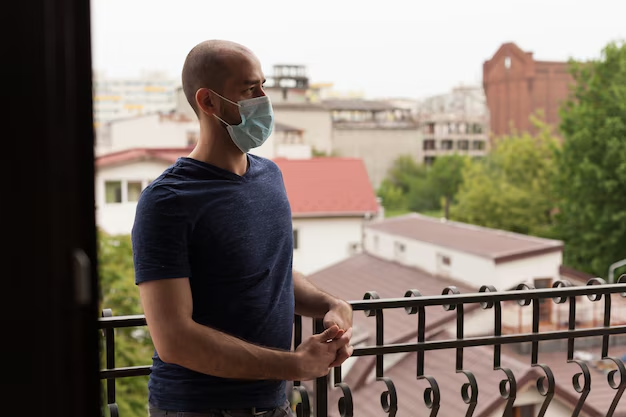Understanding Malaria: How Does One Contract This Disease?
When you think about tropical destinations with rich cultures and wildlife, the thought of contracting malaria often lurks in the background. As a disease that affects millions worldwide, with countless efforts underway to curb its spread, understanding how you can get malaria is essential for effective prevention. We'll explore how malaria is transmitted, add context with some relevant insights, and empower you with knowledge for safer travels.
Grasping the Basics: What is Malaria?
Before diving into transmission, it's crucial to establish a basic understanding of malaria. Caused by the Plasmodium parasite, malaria is a potentially lethal disease primarily transmitted to humans through the bite of infected Anopheles mosquitoes. These mosquitoes are endemic to tropical and subtropical regions, making malaria a significant concern in parts of Africa, Asia, Central and South America, and Oceania.
Malaria manifests in symptoms such as fever, chills, headaches, and muscle pain. The severity can escalate if left untreated, leading to complications like anemia, respiratory issues, and even death. However, transmission methods and prevention form the cornerstone of controlling this disease.
The Primary Route: Mosquito Transmission
The most common way malaria spreads is through mosquito bites. Here's how this transmission process works:
The Mosquito Lifecycle and Infection
- Blood Meal Acquisition: Female Anopheles mosquitoes require blood meals to develop fertile eggs. When they bite an infected person, they ingest the Plasmodium parasites present in the blood.
- Parasite Development: Inside the mosquito, the parasites multiply and undergo development in the gut. Eventually, they migrate to the mosquito's salivary glands.
- Transmission to Humans: When this mosquito bites another person, the parasites in the saliva are injected into the bloodstream, thus transmitting malaria.
Environmental Factors Enhancing Transmission
Several environmental elements and behaviors increase the likelihood of mosquito bites and subsequent malaria transmission:
- Weather Conditions: Warm, humid climates sustain mosquitoes longer, offering more chances for feeding.
- Time of Day: Anopheles mosquitoes are primarily active between dusk and dawn, aligning with people's natural behaviors of evening rest and early morning activities.
- Stagnant Water: Mosquitoes breed in stagnant water, so areas with poor drainage or open water sources are high-risk zones.
Human Factors: When Does the Risk Increase?
While the mosquito transmission route is well-known, various human-related factors can amplify the risk of contracting malaria.
Travel Habits
- Destination Risk: Travelers to malaria-endemic regions face increased risk, especially in rural areas where healthcare facilities are less accessible.
- Duration of Stay: Longer visits provide more opportunities for mosquito exposure, raising the potential for infection.
Socioeconomics and Accessibility
- Healthcare Access: Individuals with limited access to healthcare facilities have reduced options for preventive measures and early treatment.
- Public Awareness: Informed individuals are more likely to implement preventive strategies, highlighting the need for effective health education.
Breaking Myths: Can Malaria Spread Without Mosquitoes?
Though mosquito transmission is primarily emphasized, misconceptions persist about other potential malaria spreading methods. Let's set the record straight:
- Human-to-Human Contact: Malaria is not spread through casual contact. You can't get it from touching, kissing, or hugging someone who has the disease.
- Contaminated Food/Water: Unlike some infectious diseases, malaria doesn't transmit via food or drink ingestion.
- Pregnancy Transmission: Pregnant mothers can pass malaria onto their unborn child, a condition known as congenital malaria. However, this is not common compared to mosquito bites, and preventive measures during pregnancy can drastically reduce this risk.
- Blood Transfusions and Needles: Malaria can spread through infected blood transfusions or sharing needles. Vigilance in medical contexts is vital to avoid such scenarios.
Prevention: Equipping Yourself Against Malaria
Understanding transmission helps reiterate the importance of prevention. Here’s how you can safeguard yourself:
Personal Preventive Measures
- Insect Repellent: Use repellents containing DEET or picaridin on exposed skin.
- Protective Clothing: Wear long-sleeved shirts and trousers, preferably in light colors, to deter mosquitoes.
- Bed Nets: Sleep under mosquito nets, ideally treated with insecticides, to reduce overnight bites.
Environmental and Societal Initiatives
- Vector Control Programs: These include measures like indoor residual spraying and larval control to target mosquito breeding sites.
- Community Education: Education campaigns emphasizing risk awareness and control strategies are essential.
- Vaccine Development: Research on malaria vaccines is ongoing, with promising candidates like RTS,S offering partial protection.
Practical Tips for Travelers and Residents
Whether you're a tourist planning your next adventure or a resident in malaria-prone regions, being proactive helps. Consider these insights:
Before Your Trip
- Consult Healthcare Providers: Obtain advice on antimalarial medication specific to your destination.
- Stay Informed: Check malaria risk maps and recent outbreaks in your chosen destination.
During Your Stay
- Adopt Precautionary Habits: Use netting and sprays, stay indoors during peak mosquito hours, and avoid areas known for mosquito proliferation.
- Monitor Health: Be vigilant for malaria symptoms and seek prompt medical attention if needed.
After Your Return
- Awareness of Symptoms: Recognize that malaria can incubate for weeks. Symptoms might appear well after returning home, and sharing your travel history with a healthcare professional aids diagnosis.
Closing Insight
While malaria remains a global health challenge, understanding its transmission unveils a path for strategic intervention. Knowledge empowers individuals and communities, encouraging preventive actions that safeguard health. As you embark on your travels or daily routines, let this understanding nurture safe practices, ultimately curbing malaria’s toll worldwide.
Quick Takeaways
- 🌿 Malaria is transmitted primarily through infected Anopheles mosquito bites.
- 🌍 High-risk zones include tropical and subtropical regions.
- 🕒 Mosquito activity peaks from dusk to dawn – plan accordingly!
- 🛡️ Personal prevention: repellent, protective clothing, and bed nets.
- 👶 Congenital malaria is possible; expectant mothers should take precautions.
- ✈️ Travelers: Consult health providers and stay informed about local risks.
- 🔄 Post-travel: Monitor for symptoms and share travel history if unwell.
Stay knowledgeable, plan wisely, and travel safely. Your actions can make a significant difference in reducing malaria's spread. 🦟🚫
